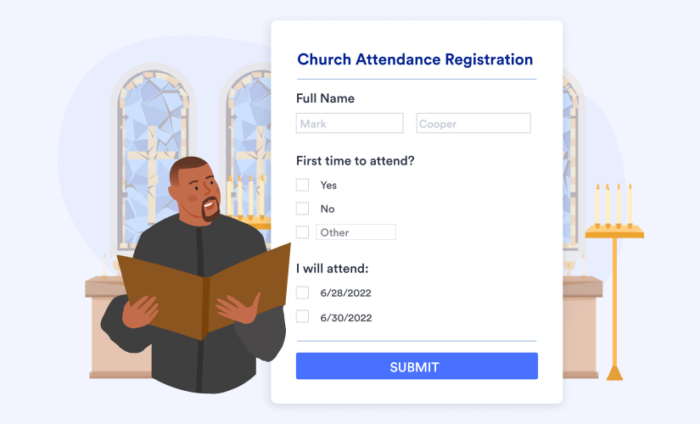As a church leader, your focus is on ministering to the congregation and inspiring people to improve their lives through principles you teach from the pulpit. While the priority should remain on the messages you share in each service, it’s also important to track church attendance.
Tracking attendance doesn’t make your ministry “all about the numbers.” Instead, it gives you a feel for engagement with your congregation over time. You can then prepare to meet the needs of those in attendance during each sermon.
Why track church attendance in the age of COVID-19?
COVID-19 had an impact on church services around the world. One of the biggest coronavirus outbreaks early in the pandemic was in South Korea, where a megachurch took the blame for more than 2,000 cases of the virus. Since COVID-19 is a respiratory virus and spreads through the air, large gatherings pose a huge risk for quickly spreading contagion.
Many places across the globe prohibited religious gatherings, preventing congregations from meeting in person. Some churches were able to shift to online services. Now that the restrictions are lifting and the economy is opening back up, churches are looking for solutions to start meeting in person again.
While church attendance tracking was important before the pandemic, it’s now essential to know how many attendees you’ll host during each service. Implementing a system to track church attendance ensures you have enough space to maintain social distancing requirements. These practices allow the congregation to worship and minimize their health concerns.
Just so you know
Receive donations, track attendance, and other info your church needs with Jotform’s free online church forms! Embed one in your website or share it with a link to start collecting submissions instantly!
Other benefits of attendance tracking
Here are other reasons why it’s important to track church attendance:
- Growth. Attendance tracking gives you data that allows you to see how the congregation is interacting and participating over time. Watch the trends to see if your attendance is growing, plateauing, or declining.
- Capacity. As mentioned above, social distancing is a new factor for all churches to consider. You must limit the number of people inside at one time, which is why a digital reservation system might be helpful for a church reopening.
- Supplies. Avoid wasting money on programs by reducing the size of your church bulletin, thus reducing the number of pages you print each week. Having a congregation headcount in advance reduces the likelihood of wasted resources and ensures that you have plenty of printouts for everyone.
- Space. Even when COVID-19 isn’t a concern, it’s essential to offer convenience for church attendees by providing enough seating and parking spaces.
- Mission. The most important reason to track church attendance is to support the mission of the church. Measuring attendance on an individual level helps you see the involvement of each person in church activities.
No matter your religion, attendance tracking and congregation management are essential steps for meeting the needs of your community.
How to track church attendance
The simplest and most effective way to track church attendance is by using software. Church metrics help you see real-time statistics about your congregation and business operations, including attendance, volunteers, donations, activities, and more.
Online forms offer an efficient way to measure attendance and gather information from church members. Jotform offers free church management software, including a variety of church forms and tools. Here are a few:
- Church attendance registration
- Church reopening volunteer request form
- Church reopening survey
- Church feedback form
- Private prayer request form
- Church membership form
- Donation and giving form
- Request for reimbursement
- Choir signup form
- Vacation Bible school registration
- Certificate of membership
Jotform offers more than 200 church form templates. These forms are easy to customize, which helps you match the needs of your church quickly and effectively.
Peter Drucker said, “If you can’t measure it, you can’t improve it.” This principle applies not just to business but also to your efforts to build your church and expand your reach. The more proactive you are in measuring your results, the more effective you’ll be in optimizing your work and changing the lives of your congregation.























Send Comment: